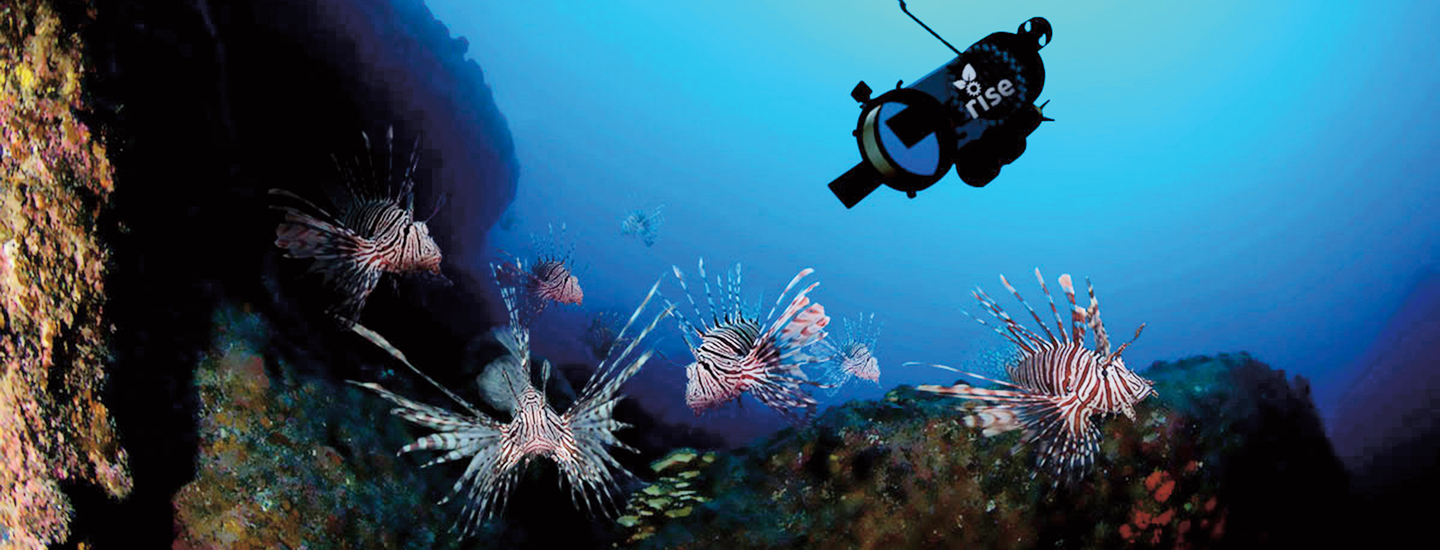
Robots to the Rescue!
Machines may be the answer to stopping a lionfish invasion.
A quiet hunter glides through the water. It’s searching for a fish. It spots just what it’s looking for: a spiny, striped fish, called a lionfish. But the hunter isn’t an animal. It’s a robot—called the Guardian LF1—designed to catch lionfish.
These fish are naturally found in the Pacific and Indian oceans. However, in the 1980s, lionfish invaded the Atlantic Ocean and Caribbean Sea (see Lionfish Invaders map, right). The fish are an invasive species in these regions. They ended up in these areas because pet owners carelessly dumped unwanted lionfish into the ocean.
Over time, lionfish numbers grew. And that’s a problem. The fish might look beautiful, but scientists have found that they’re destructive to ocean life.
Fish Invader
The invading fish are now harming coral reefs in the Atlantic and Caribbean. Lionfish eat practically every smaller fish they come across, says John Rizzi of Robots in Service of the Environment (RSE). This organization created the Guardian LF1 to combat the lionfish invasion.
“Small fish keep coral healthy,” he says. “If you take away the fish, harmful algae that smaller fish eat grow on the coral and cause coral to die.”
It’s difficult to reduce lionfish numbers for several reasons, explains Rizzi. The fish reproduce quickly, laying 50,000 eggs every three days. They also have venomous spines that keep predators from eating them. And lionfish live in deep waters, where human divers can’t go. That’s why engineers at RSE designed a robot able to travel to the deep sea to catch lionfish.
Lionfish were first spotted off the Florida coast in 1985. This
map shows where they can be found in U.S. waters today.
Robot Fishing
Last April, the team tested a prototype robot in the Atlantic Ocean. To operate the Guardian, a person on a boat uses a handheld controller attached to the robot by a long cord. A camera on top of the robot allows the operator to search for lionfish on-screen, like playing a video game. Rear thrusters move the Guardian. Once it’s close to a lionfish, two probes at the front of the robot stun the fish with an electrical shock. A vacuum sucks the unconscious fish inside the robot’s hollow body. The Guardian brings its catch back to the surface for people to eat. “They taste delicious!” says Rizzi.
WHAT A CATCH!
A stunned lionfish inside the Guardian robot
The team’s test was a success. Within only a few minutes of hunting, the robot caught its first lionfish.
Engineers at RSE are now designing a version that can hold more fish. And Rizzi says they plan to test the robots with commercial fishermen who might someday use the machines to catch lionfish to sell. He hopes the robots make lionfish a popular menu item at restaurants—and help to save Earth’s coral reefs.
